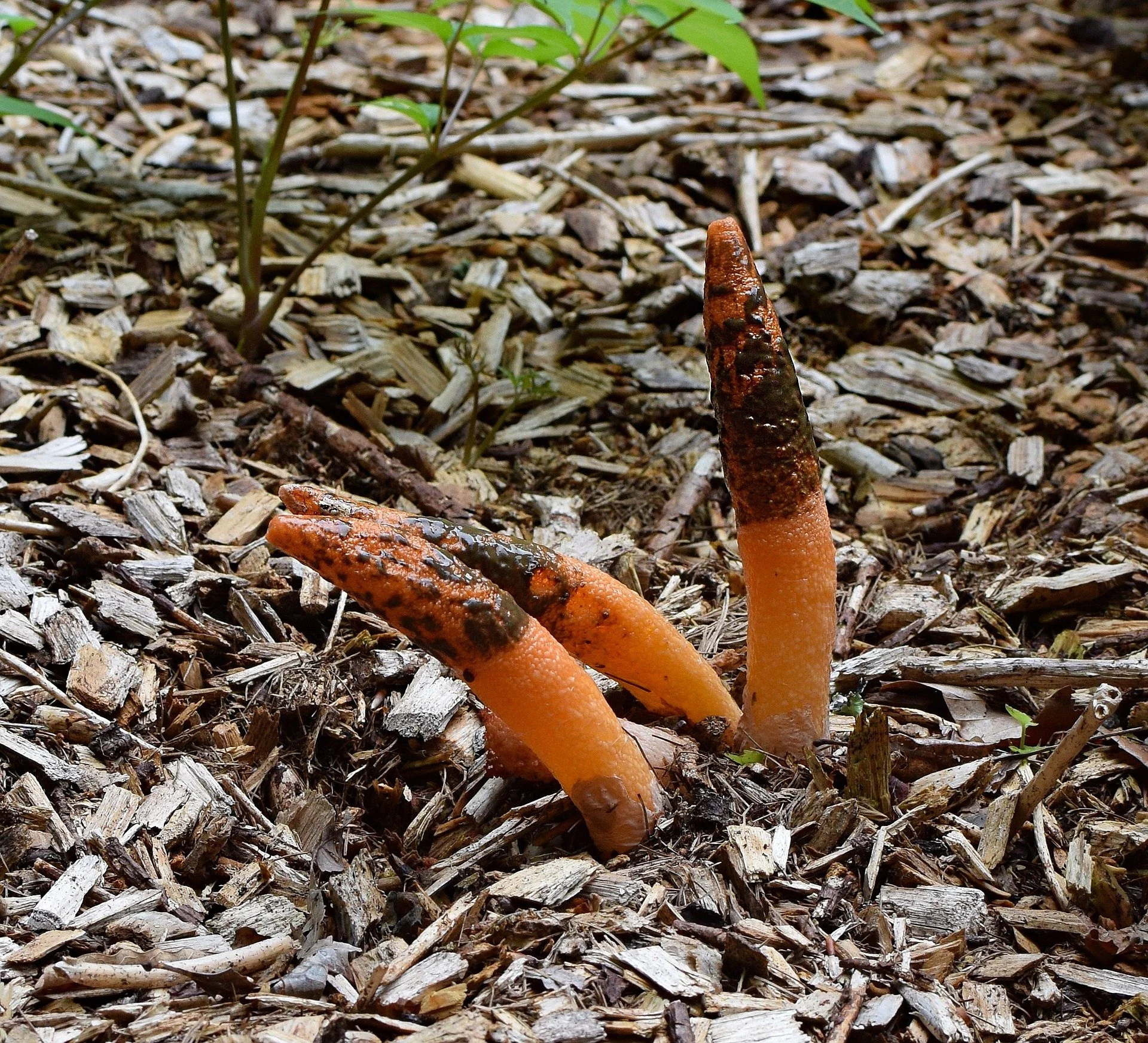A crowd gathered in the garden of a friend recently. I assumed they were admiring a new plant, so I hustled over to share in the appreciation. But no, this was no new perennial. Emerging from the mulch was a group of orange finger-like growths wearing dark brown caps. Their slightly naughty appearance spurred a lot of jokes. When I bent down to take a closer look, the nasty odor caught me by surprise. My brain churned a minute until I was able to dredge up its proper identity: Stinkhorn Mushroom. There are several forms of the stinkhorn fungus, ranging from rounded to those in front of my group, shaped like something you would see for sale in the classified section of an adult magazine. Common names for stinkhorn mushroom include Devil’s Dipstick (my favorite), Demon Fingers, and Dog Stinkhorn.
Stinkhorn mushrooms grow on rotting wood – decaying stumps or mulch, for instance. They can be found across the US, usually after a period of damp weather, The dark cap on top of the horn is a slimy mass of reproductive spores. This is where the “stink” in stinkhorn arises. The smell is described as sewage-like or compared to rotting meat. Unlike a normal fungus whose spores are spread by wind, the stinkhorn’s brownish cap atop the pinkish-orange horn contains a gooey collection of spores. These spores hitch a ride on insects who spread them about. The stench helps lure pollinators (those with a warped sense of smell, I assume) such as flies, ants, beetles, or bees. Insects who consume this odd mushroom then excrete the spores to begin a new generation.
Despite their evil appearance, stinkhorns are not poisonous and they do not transmit diseases to plants. If they appear in your garden, please leave them alone. They should not be treated with antifungals or herbicides. They are excellent decomposers. They only feed on dead plant tissue, so do not pose any threat to live, healthy plants. Stinkhorns are short-lived and offer amusement to garden visitors. Just don’t stand down wind.
These stinkhorns made a surprise appearance in a friend’s garden, just in time for a garden club meeting.


